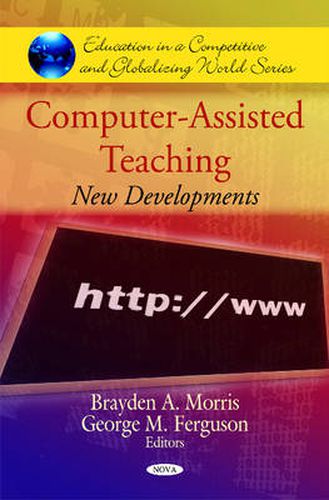Readings Newsletter
Become a Readings Member to make your shopping experience even easier.
Sign in or sign up for free!
You’re not far away from qualifying for FREE standard shipping within Australia
You’ve qualified for FREE standard shipping within Australia
The cart is loading…






Computer-assisted teaching and the learning environments that support it have risen rapidly at the school and college level over recent years. Computer-assisted teaching usually includes multimedia instructional formats, such as animation, video and simulation, and virtual learning environment such as WebCT and Blackboard. In this book, the views of chemistry students on the use of computer-assisted teaching is demonstrated. How the teacher can effectively use his electronic material resources into blending learning activities are shown, which involve a combination of face-to-face interactions and technologically mediated interactions between students and teachers. This book also considers the challenge of producing materials to support conceptual learning in science, and the type of pedagogic models that are needed for successful computer-assisted teaching of science. Moreover, the authors report how the incorporation of information and communications technology (ICT) into a teacher professional development program fostered constructivist teaching/learning practices in school classrooms. In addition, expertise reversal effect relates to the interactions between levels of learner prior knowledge and effectiveness of different instructional techniques and procedures. This book reviews recent empirical findings associated with the expertise reversal effect in multimedia and hypermedia learning environments, their interpretation within a cognitive load framework and implications for the design of learner-tailored multimedia.
$9.00 standard shipping within Australia
FREE standard shipping within Australia for orders over $100.00
Express & International shipping calculated at checkout
Computer-assisted teaching and the learning environments that support it have risen rapidly at the school and college level over recent years. Computer-assisted teaching usually includes multimedia instructional formats, such as animation, video and simulation, and virtual learning environment such as WebCT and Blackboard. In this book, the views of chemistry students on the use of computer-assisted teaching is demonstrated. How the teacher can effectively use his electronic material resources into blending learning activities are shown, which involve a combination of face-to-face interactions and technologically mediated interactions between students and teachers. This book also considers the challenge of producing materials to support conceptual learning in science, and the type of pedagogic models that are needed for successful computer-assisted teaching of science. Moreover, the authors report how the incorporation of information and communications technology (ICT) into a teacher professional development program fostered constructivist teaching/learning practices in school classrooms. In addition, expertise reversal effect relates to the interactions between levels of learner prior knowledge and effectiveness of different instructional techniques and procedures. This book reviews recent empirical findings associated with the expertise reversal effect in multimedia and hypermedia learning environments, their interpretation within a cognitive load framework and implications for the design of learner-tailored multimedia.